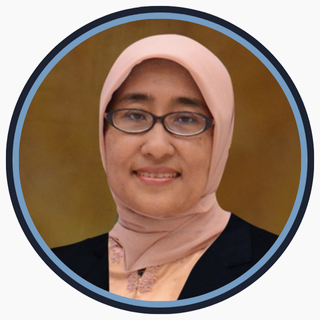EPIDEMIOLOGICAL INVESTIGATION OF NOMA IN PAPUA PROVINCE IN 2017
Downloads
Background: Indonesia Ministry of Health in October 2017 obtained information from the Public Health Emergency Operation Center (PHEOC) that there allegations of noma case in a toddler from the Korowai tribe in Asmat District. Purpose: This study aims to describe the magnitude of the noma problem, identify risk factors, and find other noma cases for prevention and control. Methods: This was a descriptive study using a case study approach. Primary data was obtained from interviews with family or close relatives of patients to obtain information about patient identity, medical history, and risk factors. Measurement of nutritional status and oral health was done by measuring weight or height and checking their oral health. Secondary data was obtained from Asmat District health office (Dinkeskab Asmat) and Yaniruma Health Center. The data analyzed were geographical, demographic, socio-cultural, transportation, and communication condition. Results: Noma sufferer was a 5-years-old child who lived in Afimabul village. There was not other cases of Noma found in Korowai tribal community. A long distance to reach health services and no availability of communication tools to Korowai tribe in Afimabul village made them inaccessible. The results of the identification of risk factors in 46 children found that the majority of them had low oral hygiene (73.91%) and consumed uncooked water (80.43%). Besides, some had an index of thin body weight (15.22%), and very lean (6.52%), and also found the suspected measles. Conclusion: There was only one case found in the Asmat district. Moreover, there were still found Korowai children with thin and very lean nutritional status and suspected measles who are risk factors for noma.
Adeniyi, S. A., & Awosan, K. J. (2019). Pattern of noma (cancrum oris) and its risk factors in Northwestern Nigeria: a hospital-based retrospective study. Annals of African Medicine, 18(1), 17–22. https://doi.org/10.4103/aam.aam
Ashok, N., Tarakji, B., Darwish, S., Rodrigues, J. C., & Altamimi, M. A. (2016). A review on noma: a recent update. Global Journal of Health Science, 8(4), 53–59. https://doi.org/10.5539/gjhs.v8n4p53
Bagewadi, S. B., Awasthi, U. R., Mody, B. M., Suma, G. N., & Garg, S. (2015). Bony fusion of the maxilla and mandible as a sequelae of noma : a rare case report. Imaging Science in Dentistry, 45(3), 193–198.
Baratti-mayer, D., Gayet-ageron, A., Cionca, N., Mossi, M. A., Pittet, D., & Mombelli, A. (2017). Acute necrotising gingivitis in young children from villages with and without noma in Niger and its association with sociodemographic factors, nutritional status and oral hygiene practices: results of a population-based survey. BMJ Global Health, 2(3), 1–10. https://doi.org/10.1136/bmjgh-2016-000253
Braimah, R. O., Adeniyi, A. S., Olanrewaju, T. A., Ibikunle, A. A., Gbotolorun, M. O., Aregbesola, S. B., ... Bala, M. (2017). Risk factor and mortality rate of acute cancrum oris (noma in Sokoto North-West Nigeria: a 13-year survey. Journal of Pediatric Dentistry, 5(1), 1–5. https://doi.org/10.4103/jpd.jpd
Edens, M. H., Khaled, Y., & Napeñas, J. J. (2016). Intraoral pain disorders. Oral and Maxillofacial Surgery Clinics of North America, 28(3), 275–288.
Feller, L., Altini, M., Chandran, R., Khammissa, R. A. G., Masipa, J. N., Mohamed, A., & Lemmer, J. (2014). Noma (cancrum oris) in the South African context. Journal of Oral Pathology and Medicine, 43, 1–6.
Frimpong, P., Amponsah, E. K., Abebrese, J., & Kim, S. M. (2017). Oral manifestations and their correlation to baseline CD4 count of HIV/AIDS patients in Ghana. Journal Korean Association of Oral and Maxillofac Surgeons, 4, 29–36. https://doi.org/10.5125/jkaoms.2017.43.1.29
Hatcher, J., & Williamson, L. (2017). Noma in a patient with HIV. Lancet Infectious Disease, 17(6), 672. https://doi.org/10.1016/S1473-3099(17)30263-3.Noma
Herrera, D., Retamal, B., Bettina, V., & Magda, A. (2018). Acute periodontal lesions (periodontal abscesses and necrotizing periodontal diseases) and endo"periodontal lesions. Journal of Clinical Periodontology, 45(20), 78–94. https://doi.org/10.1111/jcpe.12941
Ibikunle, A. A., Adeniyi, S. A., Taiwo, A. O., Braimah, R. O., Gbotolorun, O. M., Soyele, O. O., ... Bashir, M. (2017). Management of 159 cases of acute cancrum oris : our experience at the noma children hospital, Sokoto. Medicine and Health Sciences, 5(2), 172–176. https://doi.org/10.4103/amhs.amhs
Isezuo, K. O., Sani, U. M., Waziri, U. M., Garba, B. I., Mohammed, Y., Legbo, J. F., ... Omar, M. (2018). Ecthyma gangrenosum on the face of a malnourished child with pseudomonas sepsis: simulating cancrum oris case presentation. African Journal of Laboratory Medicine, 7(1), 1–4.
Jain, A., & Ranka, R. (2017). The real face of "face of poverty”: an insight on noma. Hospice and Palliative Medicine International Journal, 1(2), 49–52. https://doi.org/10.15406/hpmij.2017.01.00011
Khudhur, A. S. (2017). Identification and characterization of novel salivary biomarkers for oral inflammatory disease. Thesis. Dental Sciences, Newcastle University.
Lee, Y. J., Kim, Y. J., Won, C. H., Chang, S. E., Lee, M. W., & Choi, J. H. (2017). Nomalike necrotizing stomatitis in a child with crohn's disease. Pediatric Dermatology, 34, 275–276. https://doi.org/10.1111/pde.13212
Maley, A., Desai, M., & Parker, S. (2015). Noma: a disease of poverty presenting at an urban hospital in the United States. JAAD Case Reports, 1(1), 18–20. https://doi.org/10.1016/j.jdcr.2014.10.001
Ministry of Health RI. (2011). Minister of health RI decree number 1995/Menkes/SK/XII/2010 concerning anthropometric standards for assessing children's nutritional status. Jakarta: Ministry of Health RI. https://doi.org/10.1055/s-0029-1219204
Ministry of Health RI. (2017) Coordination meeting on public health issues in Papua Province. Ministry of Health RI. Jakarta.
Neville, B. W., Damm, D. D., Allen, C. M., & Chi, A. C. (2019). Color atlas of oral and maxillofacial diseases. Philadelphia: Elsevier Inc.
Prado-calleros, H. M., Castillo-ventura, B. B., Jiménez-escobar, I., Ramírez-Hinojosa, J. P., López-Gómez, A., García-de-la-Cruz, M., & Dayan-Nurko, M. (2017). Noma and noma-like disease in HIV/AIDS patients, a comorbid interaction: a systematic review. The Journal of Infection in The Developing Countries, 12(2), 89–96. https://doi.org/10.3855/jidc.9716
Srour, M. L., Marck, K., & Baratti-mayer, D. (2017). Noma: overview of a neglected disease and human rights violation. The American Journal of Tropical Medicine and Hygiene, 96(2), 268–274. https://doi.org/10.4269/ajtmh.16-0718
Srour, M. L., Marck, K. W., & Baratti-mayer, D. (2015). Noma: neglected, forgotten, and a human rights issue. International Health, 7(3), 149–150. https://doi.org/10.1093/inthealth/ihv001
Stanislav, N., Tolkachjov, M. D., Alison, J., & Bruce, M. D. (2017). Oral manifestations of nutritional disorders. Clinics in Dermatology, 35(5), 441–452. https://doi.org/10.1016/j.clindermatol.2017.06.009
Whiteson, K. L., Lazarevic, V., Tangomo-bento, M., Girard, M., Maughan, H., Pittet, D., ... The GESNOMA study group. (2014). Noma affected children from Niger have distinct oral microbial communities based on high-throughput sequencing of 16S rRNA gene fragments. PLoS Neglected Tropical Diseases, 8(12), 1–13. https://doi.org/10.1371/journal.pntd.0003240
WHO. (2016). Noma is a severe disease It is treatable if detected and managed early ! Africa.World Health Organization.
- Every manuscript submitted to must observe the policy and terms set by the Jurnal Berkala Epidemiologi
- Publication rights to manuscript content published by the Jurnal Berkala Epidemiologi is owned by the journal with the consent and approval of the author(s) concerned. (download copyright agreement)
- Complete texts of electronically published manuscripts can be accessed free of charge if used for educational and research purposes according to copyright regulations.

JBE by Universitas Airlangga is licensed under a Creative Commons Attribution-ShareAlike 4.0 International License.























